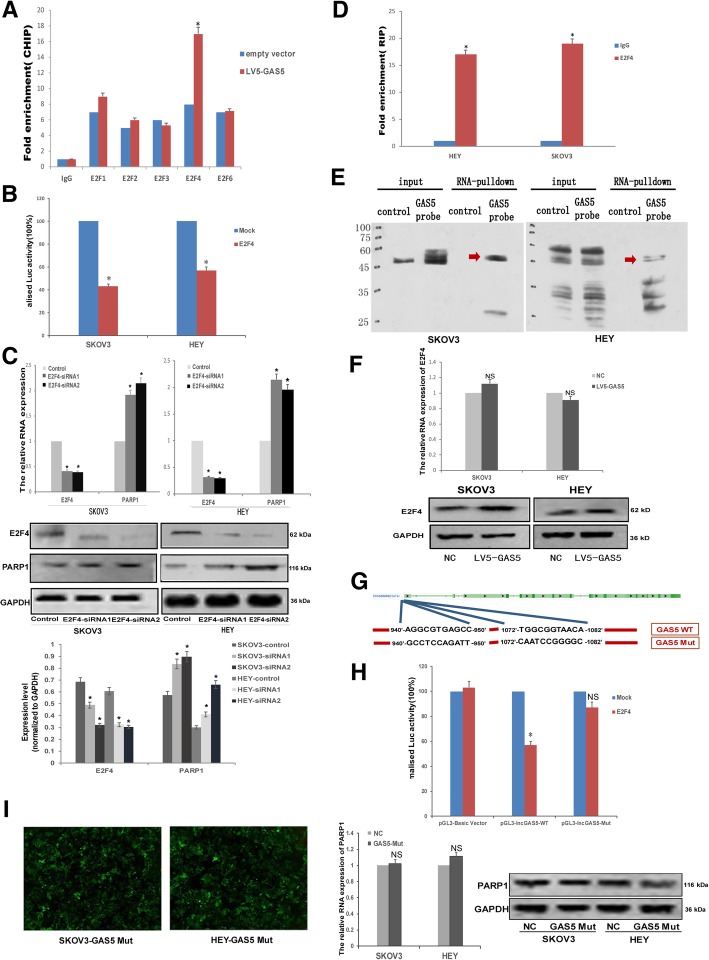Fig. 5.
GAS5 affected the PARP1 transcriptional expression by recruiting the transcription factor E2F4 to its promoter in OC cells. a LV5-GAS5 or the empty vector was transfected into OC cells, and chrome immunoprecipitations (CHIP) were performed by using specific anti-E2F1, anti-E2F2, anti-E2F3, anti-E2F4 or anti-E2F6 antibodies. b PARP1 luciferase reporter plasmid was used for luciferase reporter assay, and co-transfected E2F4 resulted in a decreased promoter activity of PARP1 in HEY and SKOV3 cells. c E2F4 siRNAs (siE2F4–1, 2) or the control siRNA were transfected into OC cells for 36 h, E2F4 and PARP1 mRNA and protein levels were then assessed by RT-qPCR or Western-blot assay. GAPDH was served as the internal control. d RNA immunoprecipitations (RIP) were performed in OC cells, and the relative quantities of GAS5 were detected by RT-qPCR assay, normalized to the input groups. IgG and E2F4 represented for the groups coprecipitation with IgG protein and anti-E2F4 antibody respectively. e Total proteins were extracted from SKOV3 and HEY cells, and then lncRNA GAS5 pull-down assay was performed. The E2F4 protein levels were evaluated by Western-blot. GAS5 probe represented the biotin-labeled GAS5 probe group and control stood for the oligo probe group. f After forced over-expression of GAS5, the mRNA and protein level of E2F4 were assessed by RT-qPCR and Western-blot assay. g Sketch map of GAS5 mutated E2F4 binding sites. h luciferase reporter assay: mutation type GAS5 (GAS5 Mut) plasmid co-transfected with E2F4 manifested no changes in GAS5 promoter activity in 293 cells. i After stable transfect mutation type GAS5 (GAS5 Mut) plasmid, the mRNA and protein level of PARP1 were assessed by RT-qPCR and Western-blot assay in SKOV3 and HEY cell lines. *P < 0.05 versus control groups

